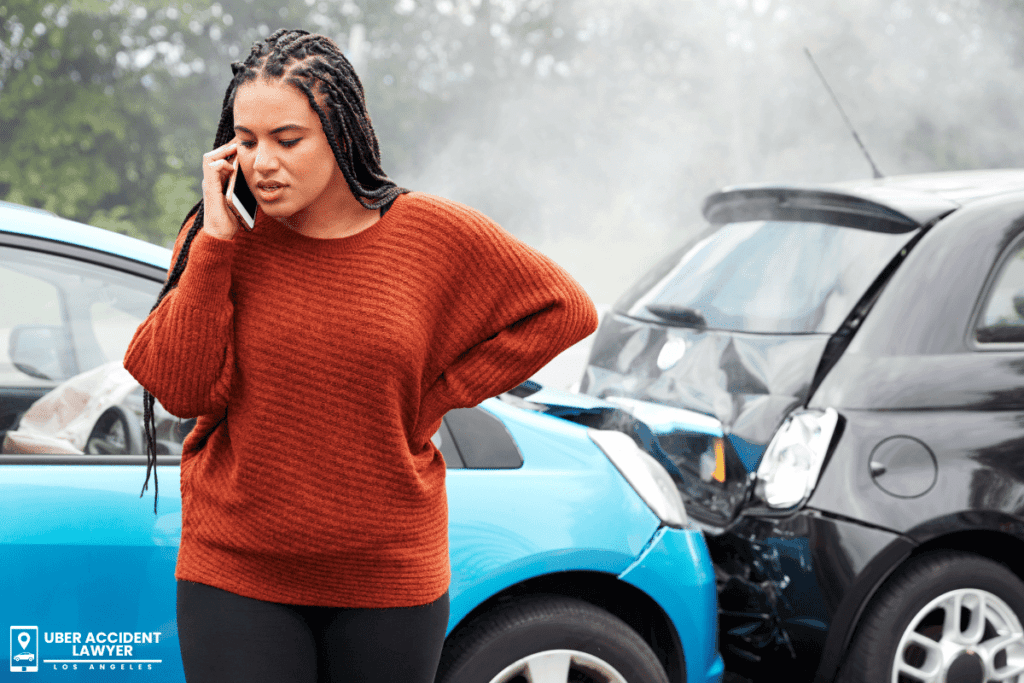Ridesharing has transformed the way you travel, offering a convenient, app-based solution to traditional taxi services. Accidents, unfortunately, are a reality in any mode of transportation, and rideshares are no exception. While rideshare services offer a modern alternative to traditional transportation methods, they are not immune to the realities of car accidents, highlighting the importance of understanding liability and damages in such incidents.
In this fast-paced world, understanding your rights and responsibilities in a rideshare accident is crucial. It’s not just about who’s at fault – it’s about insurance policies, legal implications, and ensuring you’re protected. So buckle up, as we navigate the complex world of rideshare accidents.
What Constitutes a Rideshare Accident?
A rideshare accident refers to any collision or mishap involving a vehicle used for ridesharing services – think Uber or Lyft. It’s vital to distinguish them from regular vehicle accidents, the main difference being the form of employment of the driver involved. Understanding the nuances of a Lyft accident or an Uber or Lyft accident is crucial for anyone involved in such incidents.
The moment a rideshare driver logs in to their respective app, they’re considered “on the clock.” A rideshare accident can occur in three distinct stages of this employment:
- Logged in, waiting for a ride request: This is when the driver, now acting as a Lyft driver or an Uber or Lyft driver, is available but not yet matched with a rider.
- En route to pick up the passenger: At this point, the driver has accepted a ride request.
- During the trip with the passenger: This stage covers the duration from when the driver picks up the passenger to the ride’s ending. It’s a critical period where Uber and Lyft drivers must manage the responsibilities of safe driving while navigating and interacting with passengers, which can increase the risk of accidents.
Each of these stages have different liability implications, thus, it’s critical to understand the differences.
Common Causes of Rideshare Accidents
Knowing the most frequent reasons for accidents involving rideshare vehicles like Uber and Lyft enables you as a passenger to be vigilant and proactive while on the road.
Navigation Errors
Rideshare drivers depend heavily on GPS for navigation. Straying from the route, reading the GPS incorrectly, or making last-minute turns can lead to collisions. Though technology aids rideshares, reliance on it is, in some cases, the source of the problem.
For example, quickly changing lanes after a last-minute GPS direction could lead to an abrupt crash with another driver unaware of these sudden movements.
Distracted Driving and Fatigued Rideshare Drivers

Another major cause of rideshare accidents is distracted driving. Rideshare drivers juggle between apps, GPS, and customer requests, all of which result in distraction. An instance of this can be a driver responding to a new ride request while driving, causing them to ignore the road.
Fatigue also plays a critical role. Rideshare drivers often work long, irregular hours, which induces fatigue, slowed reaction times, and impaired judgment. A 2018 AAA study indicated that driving while tired is as dangerous as drunk driving. Thus, a tired driver is a major safety risk.
Pulling Over in Unsafe Areas
Rideshare drivers might pull over in hazardous or illegal areas when picking up or dropping off passengers. They risk not only traffic violations but also potential collisions. Picture a rideshare driver picking up a passenger in a no-stopping zone on a busy street. This could easily initiate a chain of vehicles braking hard to avoid collision, potentially causing a rear-end crash.
Speeding
Finally, speeding remains a pervasive issue among all drivers, including rideshare drivers who might hurry to pick up and drop off passengers to increase profits. The National Highway Traffic Safety Administration reported that nearly one-third of all motor vehicle fatalities in 2018 involved speeding drivers. Therefore, a rideshare vehicle driven at or above the speed limit drastically enhances the risk of a serious accident.
Dealing with Rideshare Accidents
Ridesharing’s convenience can’t be overstated, but neither can the risks. They’re complex, with liability and insurance coverage varying at different stages of a rideshare journey. It’s crucial you’re aware of your rights and responsibilities should you find yourself in such a situation.
Navigation errors, distracted or fatigued drivers, unsafe pullovers, and speeding all play their part. But knowledge is power. Being aware of these factors can help you stay vigilant and proactive on your rideshare journey.

